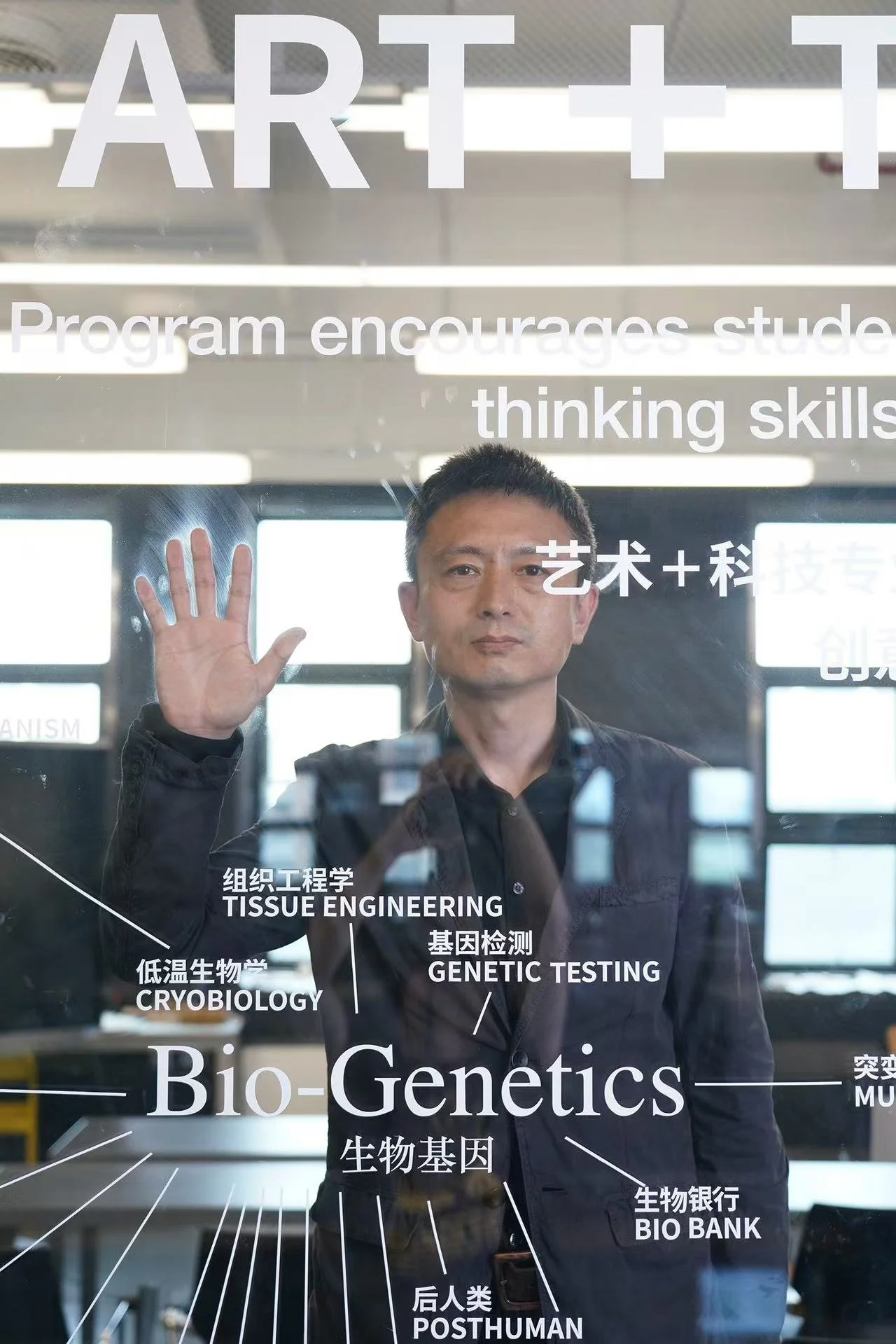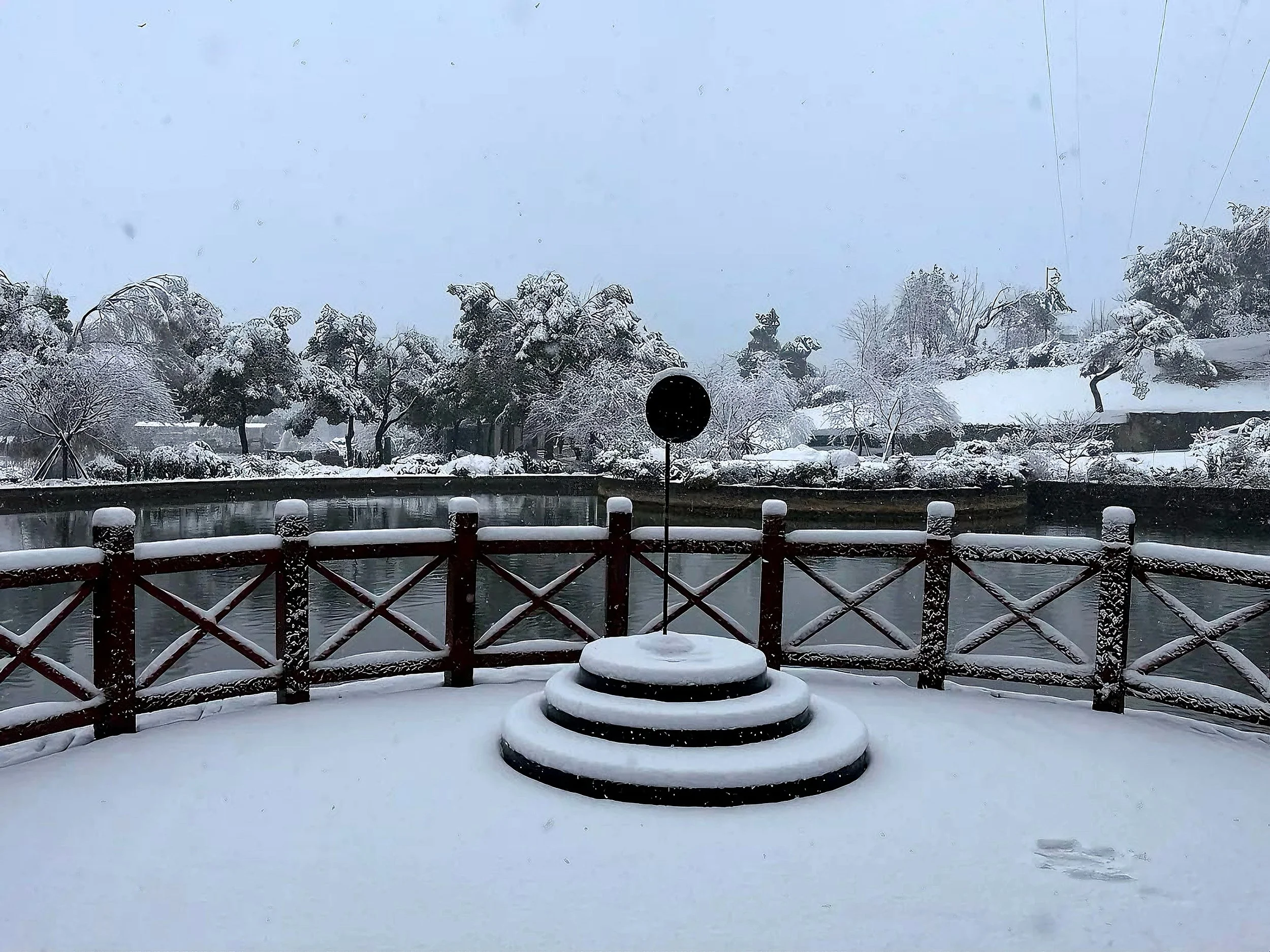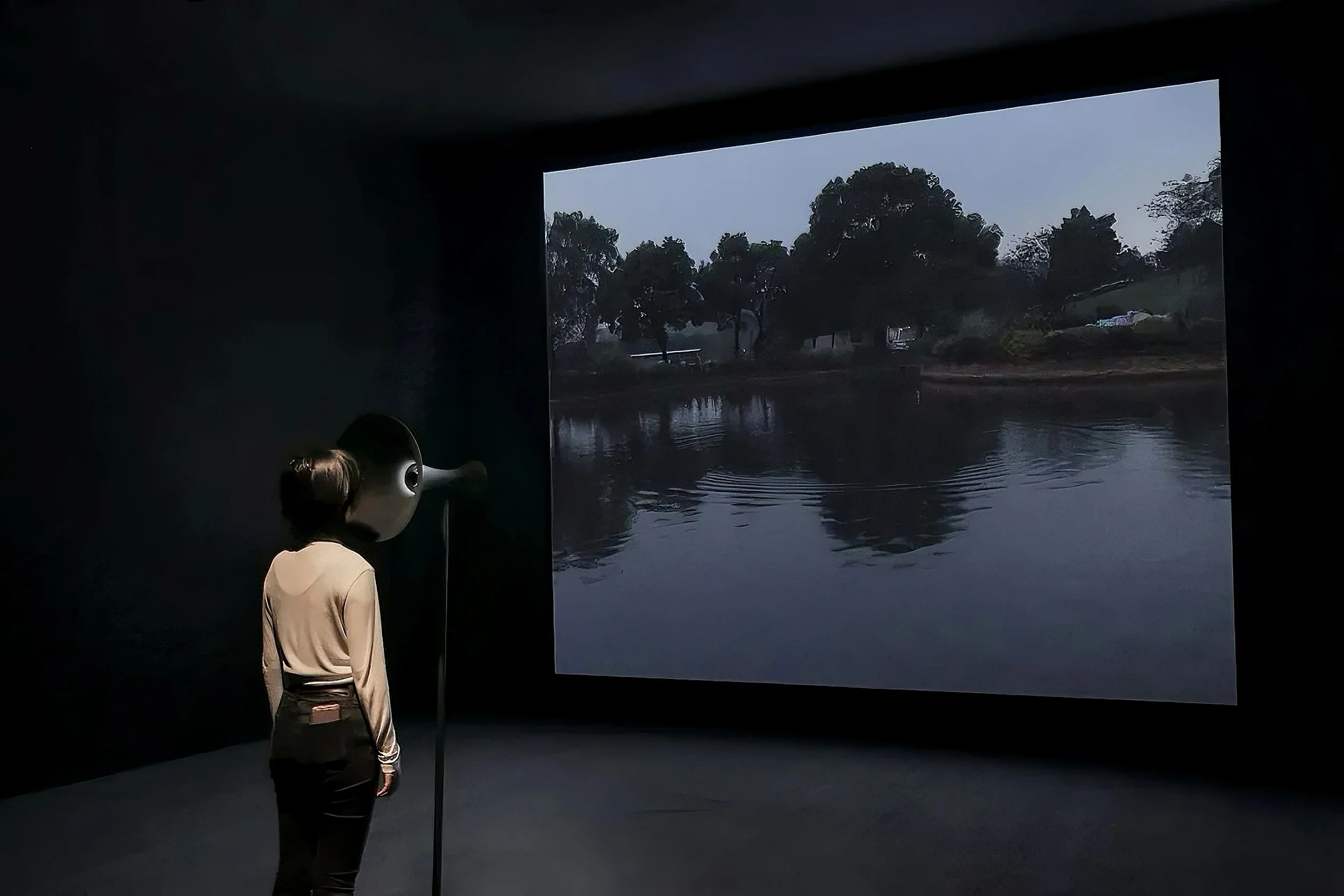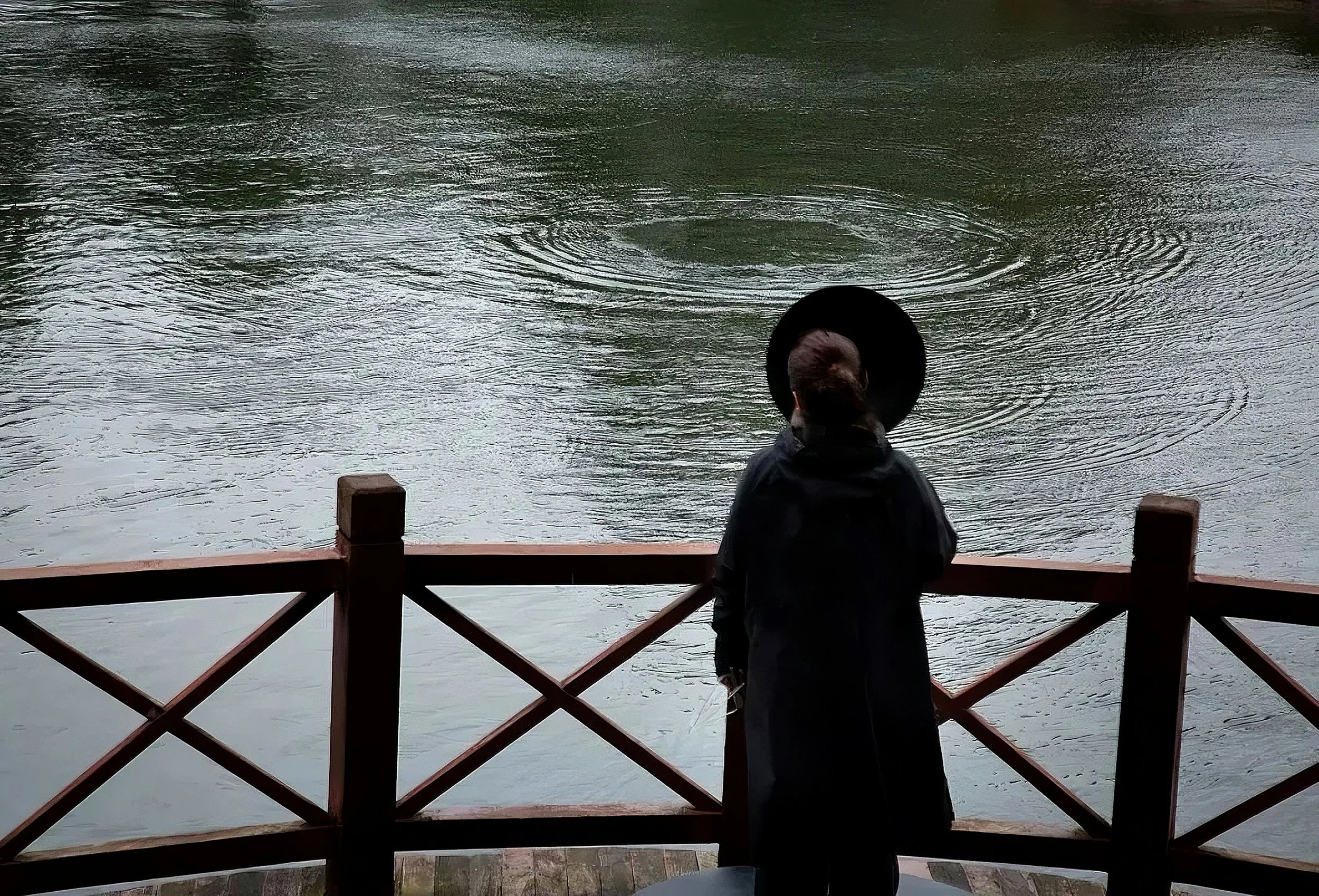A Heart Adrift on the Ripples
AI + Art Awaken the Lost Natural Spirit of Modern Civilization in Theater of Emotions: A Landscape of the Heart and Mind
Guest Jun Fei Interviewer Siyu Han & Yuyi Xiong Writer Yuyi Xiong Editor Rachel Wang Layout Edgar Zhang
Theater of Emotions: A Landscape of the Heart and Mind. Image courtesy of Jun Fei Studio.
The original interview is written in Chinese, at the bottom of this page.
Jun Fei, courtesy of Jun Fei Studio
Humans constantly attempt to understand and express their world and emotions through various symbolic forms. Some use language, others rely on colors or mathematical logic. Artist Jun Fei draws on to integrate science and art through interdisciplinary experiments, aiming to "depict" human emotions as an intangible yet profound realm that feels both real and multidimensional.
In 2019, Chenyang Xu, a mathematician who specializes in algebraic geometry, met Jun Fei in a conversation that, at first glance, was hilariously awkward—neither of them really understood the other. As Jun Fei said, “As a complete math illiterate, I couldn’t understand high-dimensional concepts in math; Chenyang Xu talks about dimensions extending infinitely, but my world only makes sense in three.” Yet it was precisely in that interdisciplinary conversation that inspiration struck: if the mathematician is obsessed with using the simplest formulas to explain a complex, multi-dimensional world, and the artist is devoted to interpreting that material, sensory world through art, why not join forces to map out human emotion, an invisible yet very real high-dimensional realm, through math and art? That unusual exchange opened a new chapter in Jun Fei’s interdisciplinary journey, and together they started the challenging theme to explore human emotion.
Emotion, which you can’t see or touch, but everyone feels, was quantified and made concrete for the first time in their collaboration. They invited psychologist Zhengkui Liu to co-develop a groundbreaking emotional computation method. Using AI algorithms to capture neural activity within human heart rates, they transformed emotions into intuitive geometric forms: circles representing positivity, cubes symbolizing negativity, and cones positioned in-between. The instability of emotions granted these forms endless variations.
Theater of Emotions: A Landscape of the Heart and Mind. Image courtesy of Jun Fei Studio.
However, in Theater of Emotions: A Landscape of the Heart and Mind, Jun Fei chose to move beyond pure geometric lines, inspired by the inspiration of his earlier work “Talk to the water”, and returned to a more culturally profound and psychologically resonant landscape imagery, water. Jun Fei thinks that all our civilization and tech have slowly made us lose that primal ability for connecting with nature, but water, culturally speaking, inherently carries a long-forgotten spirituality in nature. Hence, he utilized AI-based emotion recognition technology to transform audiences’ emotions into sound waves on water surfaces, where ripples served as responses to human expression. These responses are not explicit languages but subtle, symbolic expressions requiring the audience's deeper interpretation.
Talk to the water. Image courtesy of Jun Fei Studio.
Expanding on this exploration of water's spirituality, Theater of Emotions: A Landscape of the Heart and Mind further developed this concept, integrating Ma Yuan’s meticulous depiction of water and reconstructing sixteen distinct states—from turbulent waves to gentle ripples, even illustrating water molecule dynamics at microscopic scales. This rich expression not only pays tribute to ancient art masters but also evokes sensory experiences missing from modern life, thus reviving the primal and profound connections between humans and nature. As Jun Fei said, "The mountain in ink is not a mountain, nor the river truly flowing; the landscape carries what quietly dwells in our inner selves. Theater of Emotions: A Landscape of the Heart and Mind embodies this unique Eastern artistic philosophy, not merely creating novel objects but constructing emotional and spiritual bridges between humanity, nature, and self. With our inner world locked away in a palm-sized box, how long has it been since we cared about a spring breeze, a patch of summer shade, the scent of autumn fruit, or the melt of winter snow?
Theater of Emotions: A Landscape of the Heart and Mind. Image courtesy of Jun Fei Studio.
Looking ahead, Jun Fei is committed to making this fusion of art and technology more accessible and scalable in society. Whether through upcoming wearable emotion-healing devices or planned multi-city tours of emotion-centric art exhibitions, he intends to use digital media to extend this healing power to broader audiences.
Jun Fei ’s creative practice illustrates a new artistic potential: building bridges between seemingly unrelated fields, expanding the boundaries between art and science, and offering contemporary society an innovative pathway to emotional healing. This is more than an artistic experiment; it represents a profound journey toward self-exploration and self-acceptance.
Theater of Emotions: A Landscape of the Heart and Mind. Image courtesy of Jun Fei Studio.
Today's world is saturated with symbolic communication, causing us to forget those primal, instinctive perceptions beyond language, like echoes in valleys and ripples across lakes. These forms awaken a felt connection that language alone cannot hold. This non-verbal form of interaction is precisely what modern civilization lacks. Jun Fei's Theater of Emotions: A Landscape of the Heart and Mind acts like a spiritual medium, awakening nature’s innate spirituality and fostering a renewed, authentic, and subtle energy exchange between humans and nature.
情绪剧场·山水心境 Credit:费俊工作室
人类总是在试图用各种各样的符号理解并诠释自己生活的世界与情绪。有人用语言,有人用色彩,有人用数学逻辑, 而艺术家费俊则喜欢在跨学科的实验中,用科学与艺术的融合去“描绘”人类情绪这一无形却真实存在的高维世界。
2019 年,一位专攻代数几何的数学家许晨阳,与费俊在一次对话中相遇。表面上,两人的谈话充满“听不懂”的尴尬,费俊提到:“作为一个数学文盲,我根本听不懂他讲的高维概念;他说的维度可以无限延伸,我的世界感知只到三维。” 可正是在这种跨学科的对话里,一念之间,二人决定:若数学家痴迷于用最简洁的数学公式解释复杂的多维世界,艺术家则钟情于用艺术诠释这个充满物质和感官体验的世界。那何不联手用数学与艺术去“描绘”人类情绪这一无形却真实存在的高维世界?这次奇特的交流开启了他跨学科探索的新篇章,他们共同选择了一个极具挑战性的主题:人类情绪。
“情绪”,这个看不见摸不着,却又人人有感知的现象,首次在他们的合作中被量化、具象化。他们邀请了心理学家刘正奎,共同研发出一种全新的情感计算方法。通过AI算法捕捉人类心率中的神经活动,他们得以将情绪转化为直观的几何形态:圆形代表积极,立方体象征消极,锥形居于两者之间;而情绪的不稳定性,则为这些形态赋予了无数变化的可能。
情绪剧场·山水心境 credit:费俊工作室
然而,在《情绪剧场·山水心境》中,费俊告别单纯的几何线条,循着此前作品的灵感起源《水曰》,回归到更具文化底蕴和心理亲和力的山水意象之中。在费俊看来,文明与技术让人逐渐丧失了与自然沟通的原始能力,而水则在文化上自然而然有一种被人遗忘的灵性。于是他利用AI情绪识别技术,将观众的情绪化作声纹传递给水面,水则以涟漪回应人类的倾诉。这种回应并非明确的语言,而是更为含蓄、更需观众二次解读的表达。
Talk to the water. Image courtesy of Jun Fei Studio.
延续这种对水的灵性的探索,《情绪剧场·山水心境》进一步拓展了这种表达,融合了马远《十二水图》对水的精微刻画,重构出多达16种水的不同状态,从波涛汹涌到凝波微动,甚至以微观尺度呈现水分子般的动态。这种丰富的表达不仅致敬古代艺术大师,更唤起现代人在自然中缺失的感官体验,重新召唤出人类与自然之间原始而深邃的联结。正如费俊所说:“画山不是山,画水不是水,山水只是内心的寄托。”
情绪剧场·山水心境 credit:费俊工作室
《情绪剧场·山水心境》正体现了这种东方独有的艺术观念:并非为了创作新奇的物品,而是透过艺术搭建人与自然、人与自我的情感与精神桥梁。当我们的精神世界被锁在巴掌大的盒子空间里,我们又有多久没在乎过春日的一缕风、夏日的一盏绿荫、秋日的一丝果香和冬日的一抹融雪?
展望未来,费俊正致力于将这种艺术与科技的结合方式推向更加普惠化和规模化的应用。无论是即将推出的可穿戴情绪疗愈设备,还是正在筹划的多城市巡回的情绪艺术展览,他都正在借助数字媒介,让这种疗愈力量惠及更多人群。
费俊的创作实践向我们展示了一种全新的艺术可能性:在看似毫无交集的领域之间架起桥梁,连接了艺术与科学之间的边界,并为当代社会提供了一种创新的情绪疗愈途径。这不仅仅是一场艺术实验,更是一场关于人类自身探索与自我接纳的深度旅程。 如今的世界充斥着符号化的表达,我们渐渐遗忘了语言之外那些更原始、更本能的感知方式,就像山谷中的回声,湖水泛起的涟漪,它们无需语言,也能激发出我们深层次的沟通能力。这种非语言的交流方式,恰恰是现代文明所缺失的部分。正如与费俊共创者 刘正奎所说“ 现代社会理性的太多了,我们所创作的,不是为了 “说”,当我们把作品放在那里,让观众去纯粹的感受,就完成了我们的使命。” 费俊的《情绪剧场·山水心境》便像一个灵媒,唤醒了自然的灵性,让人与自然之间重新产生了一种真实而又微妙的能量交流。
情绪剧场·山水心境 credit:费俊工作室
















